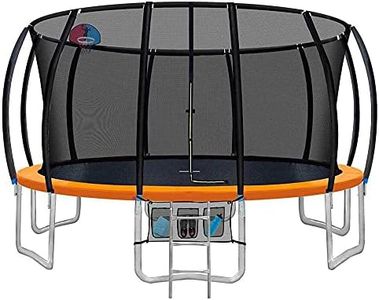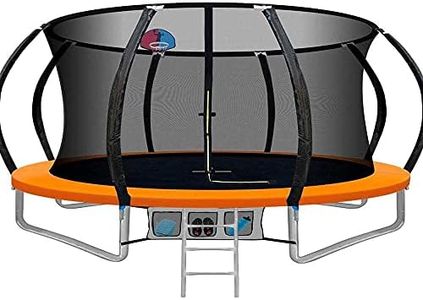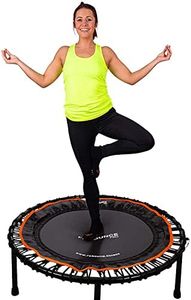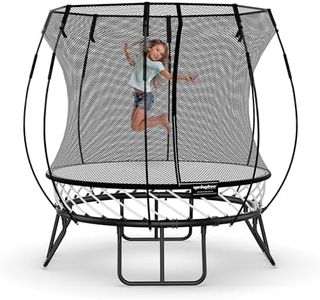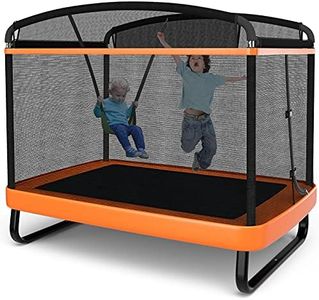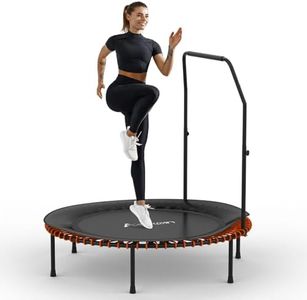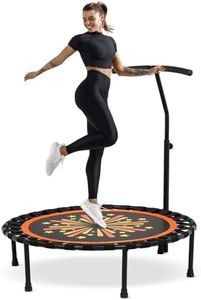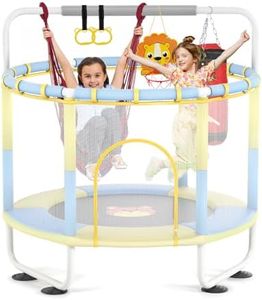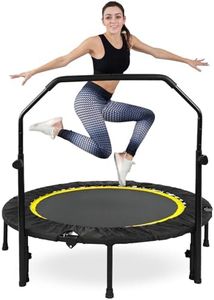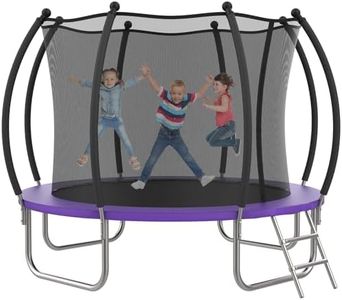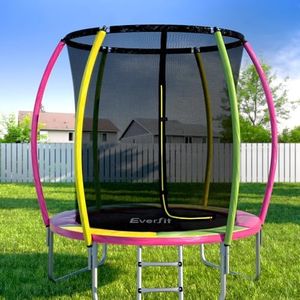We Use CookiesWe use cookies to enhance the security, performance,
functionality and for analytical and promotional activities. By continuing to browse this site you
are agreeing to our privacy policy
10 Best Safest Trampolines
From leading brands and best sellers available on the web.By clicking on a link to a third party's website, log data is shared with that third party.
Buying Guide for the Best Safest Trampolines
Choosing a safe trampoline is essential for ensuring both fun and injury-free play for children and adults alike. When browsing for trampolines, you should focus not just on size and aesthetics, but especially on features that prevent accidents and maximize safety for all users. Understanding the key safety-related specs will help you make the best, most informed choice for your specific needs, whether you’re buying for home use, neighborhood get-togethers, or a sports facility.Enclosure NetThe enclosure net is a safety mesh that surrounds the jumping area and prevents users from falling off the trampoline. A high-quality net is crucial to stop accidents, especially during energetic play or with younger children. Nets can be attached inside (over the springs) or outside (on the frame) of the trampoline. Inside nets are considered safer as they keep jumpers away from the springs and frame, reducing the risk of pinches and collisions. Always check that the net is made from tear-resistant material and that its poles are padded and securely anchored. This feature is vital if your users are likely to lose balance or perform jumps near the edge.
Padding Over Springs and FramePadding is used to cover the springs and hard frame edges of a trampoline, reducing the risk of sprains or cuts from direct contact. The thickness and coverage of this padding matter for safety: thicker, UV-resistant padding will last longer and provide better cushioning. Look for padding that’s wide enough to fully cover hazardous areas and firmly secured so it doesn’t slide out of position. For households with young children or less coordinated users, premium and thick padding is especially important.
Weight LimitThis spec tells you the maximum load the trampoline can safely support at one time. Choosing an appropriate weight limit is important to prevent frame damage or accidents caused by overloading. Weight limits typically range from about 100 kg (for small, kids-only models) up to 200-400 kg for larger, family-sized trampolines. For single-child use, a lower limit might be enough, but for families or frequent group use, opt for a higher weight rating to ensure safety and longevity.
Frame Material and DesignThe frame is the trampoline’s skeleton, so its strength, stability, and resistance to rust are key safety factors. Frames are usually made from steel, but the thickness of the metal and the way joints are connected significantly impact durability. Rust-resistant coatings and robust welds help prevent structural failures. Heavier-duty frames are a wise choice for windy areas, large families, or if the trampoline is used year-round. Consider how many users and how active they are when weighing frame quality.
Spring or Springless DesignTraditional trampolines use metal springs, while some modern models use flexible rods or bands in place of springs (springless). While springs can offer a lively bounce, they also present pinch hazards and require more maintenance. Springless designs are generally safer as they relocate impact points away from the edges and eliminate gaps where injuries can occur. If safety is your top priority, or if you want to minimize maintenance, consider a springless option.
Entrance SafetyThis refers to how users enter and exit the trampoline: through a zippered or velcro door in the safety net or over a ladder. An easy-to-secure entrance prevents accidental falls and keeps young users from slipping out unnoticed. Zippers that close fully and lockable entrances are best for households with toddlers or unsupervised kids. If your primary users are very young or if you’re safety-conscious, prioritize secure, child-proof entrance systems.
